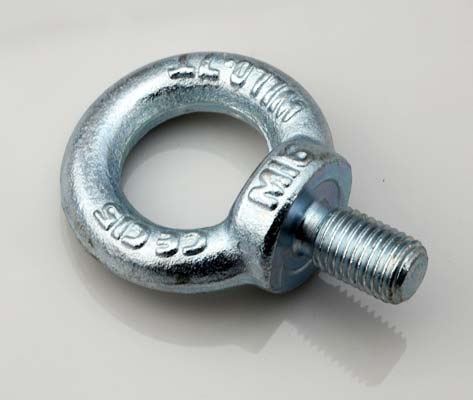- Contact Innally, Let you purchase forgings in China more favorable prices, products more assured!
- Hotline:+(86)15038323776 Email:innally@innally.com
What are the common problems and solutions of rigging forgings?
- Category: Rigging and fasteners, Stainless steel forging
- |
- Date: 13/10/2023
With the continuous progress of science and technology and the increasingly extensive industrial application, the production and application of rigging forgings will be further developed and promoted. The future of rigging forgings will pay more attention to the performance of lightweight materials, high strength, corrosion resistance, environmental protection and other aspects, while constantly exploring new processing processes and technologies to improve production efficiency and quality levels. It is believed that in the near future, the production and application of rigging forgings will usher in a better prospect.
Product Details
Rigging forgings often encounter various problems in the process of production and application, which may seriously affect the quality and safety of forgings if they are not properly solved.
- Common Problems
Uneven hardness: During the production process of rigging forgings, uneven heating and cooling may lead to uneven hardness of forgings, affecting their bearing capacity and service life.
Defects: Due to materials, processes, equipment and other reasons, rigging forgings may have surface or internal defects, such as bubbles, cracks, impurities, etc., which will affect the quality and safety of the forgings.
Fatigue fracture: Under the action of alternating loads, fatigue fracture may occur in the rigging forgings, especially in the stress concentration parts, such as rings, hooks, etc.
Insufficient bearing capacity: The bearing capacity of rigging forgings is insufficient and cannot meet the requirements in practical applications, which may lead to safety accidents.

Second, the solution
Adjust the choice of raw materials: Choose raw materials with stable quality and excellent performance, such as high-quality carbon steel, alloy steel, etc., to ensure the basic performance of forgings.
Optimization of processing technology: Through the optimization of heating, forging, cooling and other process parameters, improve the quality and uniformity of forging parts. For example, high temperature homogenization is used to fully soften the material and reduce the internal stress.
Improve the quality of heat treatment: by accurately controlling the temperature, time, atmosphere and other parameters in the heat treatment process, to ensure that the forging obtains the ideal hardness, toughness and fatigue properties.
Strengthen quality testing: strict quality testing of forgings, including non-destructive testing, mechanical properties testing, etc., to ensure the quality and safety of forgings.
- Practical cases
The fracture accident of a rigging forgings used in a large port during the lifting operation was found to be caused by the defects in the forging process. In order to solve this problem, the manufacturer has taken the following measures:
Adjust the selection of raw materials: choose more high-quality materials, such as imported high carbon steel, to improve the purity and uniformity of materials.
Optimization of processing technology: The use of a new high temperature forging process, so that the material fully softened at high temperature, reduce internal stress, improve the quality of forging.
Strengthen heat treatment control: By precisely controlling the temperature and time of heat treatment, the forging obtains more ideal hardness and toughness, and improves its load bearing capacity and fatigue resistance.
Enhanced quality testing: More stringent quality testing standards are adopted to conduct non-destructive testing and mechanical property testing for each batch of forgings to ensure product quality and safety.
After the above improvement measures, the quality of the rigging forging has been significantly improved, and no fracture accident has occurred in the subsequent lifting operation. At the same time, due to the improvement of the purity and uniformity of the material, the bearing capacity of the forging has also been improved, extending its service life.
There are many possible reasons for the problems encountered in the practical application of rigging forgings, but these problems can be effectively solved by adjusting the selection of raw materials, optimizing the processing technology, strengthening the control of heat treatment and strengthening the quality inspection. In practice, should be combined with the specific situation and actual needs, take the corresponding solution.
With the continuous progress of science and technology and the increasingly extensive industrial application, the production and application of rigging forgings will be further developed and promoted. The future of rigging forgings will pay more attention to the performance of lightweight materials, high strength, corrosion resistance, environmental protection and other aspects, while constantly exploring new processing processes and technologies to improve production efficiency and quality levels. It is believed that in the near future, the production and application of rigging forgings will usher in a better prospect.
nannan
INNALLY mainly provides you with various types of cast and forged parts products. Welcome your inquiries! innally@innally.com
Related Products
Search
Forging center
- Steel forgings
- Aluminium alloy forging
- Titanium alloy forging
- Stainless steel forging
- Copper forging
- Automotive forgings
- Locomotive forging
- Bicycle forgings
- Motorcycle forging
- Rigging and fasteners
- Bearing forging
- Electric power fittings
- Marine forging
- Mechanical forgings for metalworking
- Mining machinery forgings
- Marine engineering forgings
- Construction machinery forgings
Popular product

© 2025. All Rights Reserved.






